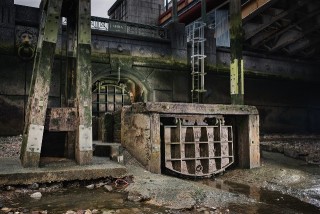The decision from the secretaries of state for the environment and for communities & local government supports the recommendation made by the Planning Inspectorate.
Thames Water can now go ahead and start construction of the 25km 'super sewer' in 2016 as planned.The project has been given a development consent order, or DCO, by the government, to be built as proposed using 24 construction sites across London. It will involve using six tunnel boring machines from five drive sites and will directly create more than 4,000 jobs.
The project will be paid for by Thames Water sewerage customers but financed and delivered by an independent specialist company, separate to Thames Water and with its own licence from Ofwat. Interested investors are currently preparing bids for this company, with the successful bidder expected to be announced next summer.
The planning application, which had more than 50,000 pages and 1,000 plans, is the first waste water project to be submitted and the largest ‘nationally significant infrastructure project’ (NSIP) to be examined by the Planning Inspectorate. It was submitted for consideration on 28 February 2013 and accepted for examination on 27th March 2013.
During the six month examination the public and statutory consultees had the opportunity to give evidence to the examining authority at more than 40 combined days of hearings. More than 1,200 representations from interested parties were considered and in excess of 400 written questions were asked by the examining authority. A recommendation was made to the two secretaries of state on 12th June 2014.
Planning Inspectorate chief executive Simon Ridley said. “Thames Tideway Tunnel is by far the largest application to go through the National Infrastructure regime. As such it required a panel of five examining inspectors who were given the task of considering all the evidence put to them by the interested parties.
“The panel took full account of views from communities across a number of London boroughs who might be affected by this proposal alongside national policy and evidence of the need for the project.”
At the same time, ministers have also approved the Clocaenog Forest wind farm in north Wales and the North Killingholme power project. All three applications were submitted to the Planning Inspectorate within days of each other.
Documentation, including the decision, the recommendation made to the Secretary of State and the evidence considered by the Examining Authority in reaching its decision, is publicly available on each project’s page of the National Infrastructure Planning website:

The 25km Thames Tideway Tunnel will run underground from Acton storm tanks in West London, and travel roughly the line underneath the river to Abbey Mills Pumping Station in East London, where it will connect to the Lee Tunnel.
The sewage collected from the 34 most polluting discharge points along the tidal river in central London will then be taken via the Lee Tunnel to Beckton sewage works for treatment.
Last year, 55m tonnes of sewage polluted the tidal River Thames, far higher than the average 39m tonnes that discharges in a typical year.
This was due to the exceptionally wet weather, which caused the combined sewerage system that London has, collecting rain water and sewerage water from drains, to fill up and pour into the river even more than normal.
With the weather of 2014 already proving to be wetter than a typical year, the amount of sewage which is going into the river is likely to once again be above average.
Andy Mitchell, chief executive of Thames Tideway Tunnel, said: “If the tunnel had been in operation last year, it would have captured 97% of the sewage that poured in to London’s river."
He added: “Hardly a week goes by when untreated sewage isn't pouring in to London’s river and we are pleased that we can now start to tackle this archaic problem. This is a huge project but it’s a huge problem, and we can now get on with tackling it. It’s no easy task, but we’re confident that we can deliver this project and still achieve our aim of minimising the impact on our customer bills.”
Mr Mitchell joined the project from Crossrail earlier this year.
Baroness Jo Valentine, chief executive of business lobby group London First, said: “The system we have currently does not have the capacity to cope with the existing population, let alone support a city growing by 100,000 people a year,” she said.
“An additional 600,000 properties will need to be built by 2030, and each of those homes will need at least one toilet – we need the Thames Tideway Tunnel.”
Got a story? Email news@theconstructionindex.co.uk



